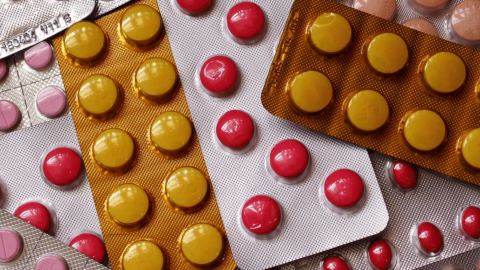When fighting opioid addiction, Suboxone is a powerful ally, but did you know there’s more than one way to take it? Suboxone comes in both tablets and strips, and while they both deliver the same medication, the differences in how they’re used might affect your daily routine and preferences.
So, which one is the best fit for you? In this article, we’ll break down the key differences between Suboxone tablets and strips, helping you make an informed choice for your recovery journey. Plus, we’ll tell you how and where to get Suboxone online and start your opioid addiction treatment now.
What Is Suboxone?
Suboxone is a combination of buprenorphine and naloxone, designed to help manage opioid addiction by reducing cravings and withdrawal symptoms. Whether it comes in tablet or strip form, Suboxone works the same way: you place it under your tongue (sublingually), where it dissolves and is absorbed into your bloodstream.
Suboxone Tablets vs. Strips: What’s the Difference?
While both forms of Suboxone contain the same active ingredients, the tablet and strip differ in how they’re administered and their practical use in daily life. Here’s a quick look at how they compare:
Suboxone Tablets
- How to take it: Dissolve under your tongue (sublingually).
- Appearance: Small pill form, usually white or orange.
- Portability: Easy to carry discreetly in a pill bottle.
- Taste: Some users report a bitter taste as the tablet dissolves.
- Cost: Slightly more affordable for some patients, depending on insurance.
Suboxone Strips
- How to take it: Dissolves under your tongue or on the inside of your cheek (buccally).
- Appearance: Thin, flexible film that dissolves quickly.
- Portability: Packaged individually, strips are easy to slip into a pocket or wallet.
- Taste: Designed to have a milder flavor than tablets.
- Absorption: Some patients find strips dissolve faster and absorb more consistently.
Suboxone Tablets vs. Suboxone Strips: Which One Is Better for You?
The choice between Suboxone tablets and strips often comes down to personal preference and lifestyle. Here are a few factors that can help you decide:
Why You Might Prefer Suboxone Tablets:
- Cost-conscious: Tablets may be a more budget-friendly option for some, especially with certain insurance plans.
- No-frills approach: If you don’t mind the taste and prefer the simplicity of a pill, tablets might be a good fit.
Why You Might Prefer Suboxone Strips:
- Discreet and convenient: Strips are individually wrapped, easy to carry, and don’t require a pill bottle.
- Faster dissolving: Many patients find strips dissolve quicker and more comfortably than tablets, making them more convenient for on-the-go dosing.
How to Use Suboxone Tablets and Strips Correctly
No matter which form you choose, it’s important to use Suboxone exactly as prescribed by your healthcare provider. Here are some quick tips to ensure you’re getting the most from your medication:
- Place under the tongue: Whether it’s a tablet or a strip, Suboxone needs to be dissolved under your tongue (or on the cheek for strips). Avoid chewing or swallowing it whole, as this reduces its effectiveness.
- Let it dissolve completely: Give the medication time to dissolve fully—this may take a few minutes. Try to avoid eating, drinking, or talking until it’s fully absorbed.
- Follow your prescribed dose: Stick to the exact dosage your doctor recommends. If you miss a dose, follow up with your healthcare provider on how to proceed.
Common Side Effects: Tablets vs. Strips
While Suboxone is generally well-tolerated, both the tablet and strip forms can cause similar side effects, such as:
- Nausea
- Headache
- Dizziness
- Constipation
Some patients report that strips are a bit gentler on the stomach or easier to tolerate due to their quicker absorption. If you experience any side effects, especially if they’re persistent, make sure to talk to your doctor about adjusting your dosage or switching forms.
Making the Choice: What Works for You?
At the end of the day, both Suboxone tablets and strips are designed to help you manage opioid cravings and withdrawal symptoms, setting you up for success in your recovery journey. The choice between the two comes down to your personal needs—whether you value discretion, convenience, or cost.
No matter which form you choose, QuickMD is here to help. Our experienced providers can walk you through your options and help you decide what’s best for your treatment plan. With fast, affordable telemedicine appointments, you can get started on Suboxone today without the hassle of in-person visits.
How QuickMD Can Help You Get Suboxone
At QuickMD, we know that taking the first step toward recovery is a big deal, and we’re here to make it as smooth as possible.
Whether you prefer Suboxone tablets or strips, our team of licensed doctors can quickly evaluate your needs and get you a prescription—all from the comfort of your home. With our easy telemedicine service, you can get Suboxone prescribed today and sent directly to your pharmacy, so you can focus on what matters most: your recovery.
Final Thoughts: Suboxone Tablets vs. Strips
Whether you prefer tablets or strips, the most important thing is finding a treatment plan that works for you and supports your long-term recovery. Both forms of Suboxone offer effective relief from opioid cravings and withdrawal symptoms, but the choice comes down to how you want to incorporate the medication into your daily routine.
If you’re ready to start your recovery journey, schedule an appointment with QuickMD today. Let us help you find the right solution—whether it’s Suboxone tablets, strips, or something else tailored just for you.




